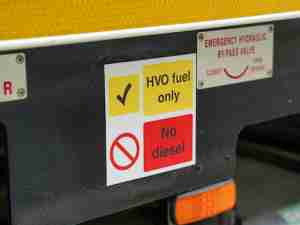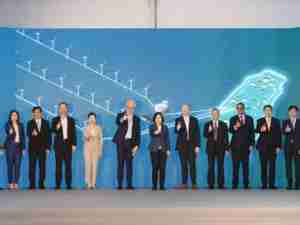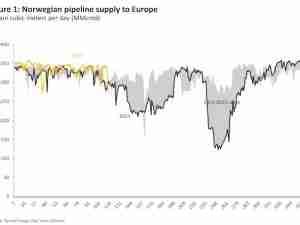The interpretation of a few words of regulation by the US Treasury Department could upend expectations for how tens of billions of dollars in new electric-vehicle tax incentives will be distributed, according to Bloomberg discussions with a dozen manufacturing executives, battery analysts and government officials.
At stake over the coming weeks is the extent to which a critical part of the battery supply chain will end up being made in North America or remain where it’s currently concentrated, in Asia.

“There are specific factories — and there are thousands of jobs tied to those — that are hanging in the balance,” said J.B. Straubel, the founder of battery materials maker Redwood Materials Inc. and a co-founder of Tesla.
By the end of the month, Treasury is expected to issue guidance for tens of billions of dollars in EV incentives over the next decade. One of the most consequential parts involves complex rules for where the most valuable battery materials must be made in order to qualify for the $7,500 EV subsidy in the 2022 Inflation Reduction Act.
A white paper released by the department on Dec. 29 described its intentions for the forthcoming guidance. It would treat anode and cathode active materials as processed critical minerals rather than as battery components, as they are categorized in another section of the text of the IRA itself. That change would widely expand the countries where the materials can be sourced under the law.
US Senator Joe Manchin, the West Virginia Democrat who demanded many of the law’s strict domestic-sourcing requirements to win his vote during the negotiations over the package last year, told Bloomberg that his work on the law has been repeatedly undermined by Treasury in favor of making it easier for automakers to qualify for credits.
“These credits were designed to grow domestic manufacturing and reduce our reliance on China and other foreign supply chains,” Manchin said in an email to Bloomberg. “A move like this is not only counter to the law’s intent but it would significantly compromise American energy security and deepen our dependence on foreign supply chains for things we can and should be doing right here at home.”
Treasury spokesperson Ashley Schapitl said in a statement, “The guidance we are releasing in March is centered on building a robust and resilient industrial base in the U.S. that will create more jobs, and strengthen the supply chains that are vital for energy security with like-minded partners.” Additional changes to the guidance are possible after it is released in draft form.
Every EV battery has two electrodes — a cathode and an anode — between which trillions of charged lithium atoms travel. The cathode is the biggest factor in a battery’s performance, cost and environmental footprint. Cathode is responsible for 60% to 70% of the cost of a battery cell, while anode makes up another 9% to 11%, according to data from research group BloombergNEF.
Cathode and anode materials today are produced almost entirely in China, South Korea and Japan. But that has started to change. Just since the climate and tax law was passed in August, companies have announced more than $10 billion in new factories to make cathode and anode in the US. At least a dozen US startups are developing next-generation materials to make cheaper EVs that drive farther and charge faster.
Requiring cathode and anode to be sourced in North America benefits those startups, while a wider interpretation is favorable to major automakers with global supply chains.
“The language that’s proposed would still allow you to do the highest-value parts of the battery supply chain outside of the United States,” said Vivas Kumar, chief executive officer and co-founder of Mitra Chem, a cathode development company based in Mountain View, California, that plans to announce its first commercial-scale factory location later this year. If the white paper guidance proceeds, he said, “we’re going to end up being no different than today’s industry — which would be a travesty.”
‘Really out of left field’
One of the leading companies building out the US battery supply chain is Redwood, created by Straubel. In December, Redwood started work on a $3.5 billion factory near Charleston, South Carolina. Less than two months later, it won a $2 billion federal loan to expand production in Nevada. It plans to make enough cathode and other critical materials for 1 million EVs a year by 2025 and enough for 5 million annually by 2030.
In an interview, Straubel called the proposed reclassification by Treasury “really out of left field” and said it would be “clearly changing the entire intent of the law.” He said he’s already hearing from automakers and other materials makers who are reassessing investment plans based on the white paper. “It’s not a hypothetical thing,” he said.
The Inflation Reduction Act incentivizes domestic production of battery technologies in a variety of ways, including a 10% manufacturing credit that applies to anode and cathode production and isn’t affected by Treasury’s guidance.
The consumer tax credit “is only one of several incentives that will bolster EV supply chains outside of China,” said David Schwietert, chief policy officer of the Alliance for Automotive Innovation, an automotive industry trade group. Those, he said, will “further accelerate U.S. investment and joint partnerships for critical mineral extraction, processing and battery cell production in the U.S.”
The biggest prize, however, is the $7,500 credit that consumers will receive when buying a qualifying electric vehicle.
There are two parts to that subsidy, each accounting for $3,750 off the price of a new car. The first $3,750 has to do with what the law calls “critical minerals.” These include elements such as lithium, cobalt and nickel. In order to qualify, a certain percentage of materials, which ratchets up each year, must be mined and refined in countries with which the US has established free trade agreements, including South Korea. (There are also talks underway to apply this definition more broadly, to the EU and Japan.)
The second $3,750 hinges on the various manufactured components that go into a battery pack, including electrodes, solvents, additives, salts, battery cells and the modules that hold the cells. A gradually rising percentage of the value of all of the components, minus the value of the critical minerals, must be made in North America.
For the most part, everything that is mined and refined falls into Part 1 and everything that is combined using a chemical or industrial process falls into Part 2.
While cathode and anode materials are clearly categorized as battery components in one section of the law, the category isn’t explicitly defined in the part of the law addressing the consumer subsidy. Treasury’s white paper would create a new third category of products, called “constituent materials,” which is mostly just anode and cathode materials. These would be treated like critical minerals — that is, obtainable from other partner countries — until the point when they are adhered to metal foils. Only then would they graduate to the stricter North American “components” category.
“It seems that Treasury is yet again ignoring the will of Congress by looking to blatantly expand the definition of a critical mineral to include ‘constituent materials,’” Manchin said.
Thomas Conway, international president of the United Steelworkers, the largest industrial union in North America, said Treasury “should keep with the direction it received from Congress.” In a letter to Treasury Secretary Janet Yellen on March 7, he wrote, “This expansion could damage the ability of the United States to create thousands of jobs in the supply chain for batteries.”
Many major automakers and battery cell manufacturers wrote to Treasury to suggest changes similar to the white paper, or advocated through the industry’s trade groups. The guidance would strongly incentivize cell and pack manufacturing in the US, make it easier to fulfill the reporting requirements for components, and give those manufacturers greater control over how to meet the subsidy requirements.
Shifting cathode and anode materials into the critical minerals calculation would make the provenance of individual battery components all but irrelevant, according to data from BloombergNEF. As long as battery cells and modules are produced in North America, that would comprise essentially all of the battery’s “component” value, because battery cell manufacturers already include the final steps of turning cathode and anode materials into qualifying electrodes as part of the cell-making process.
Korean battery industry analysts at Macquarie Research reached a similar conclusion after reading the white paper, writing in a report to clients that the guidance meant “less incentives for cathode material suppliers to expand to the US.” While China will mostly be cut out of the US supply chain, they concluded, it leaves “Korea supply chain advantage intact.”











